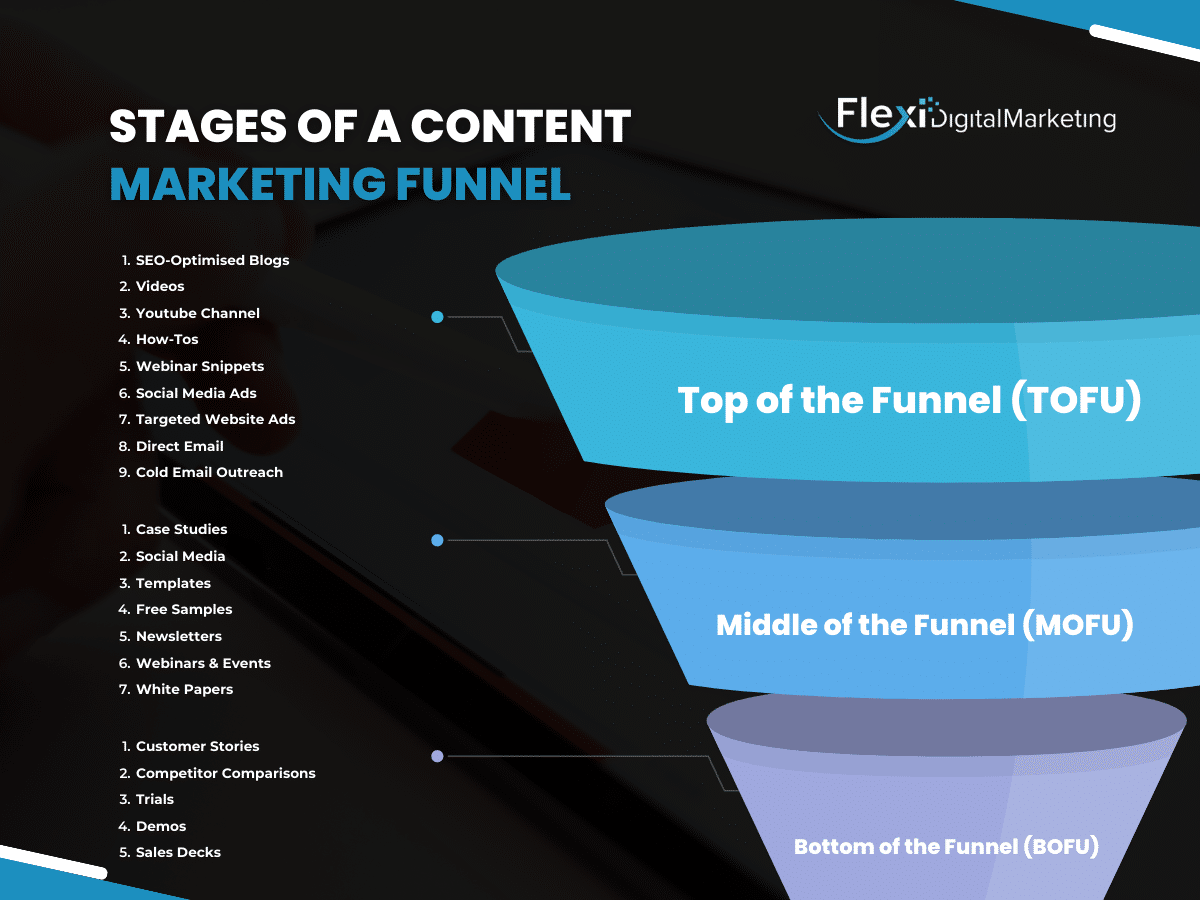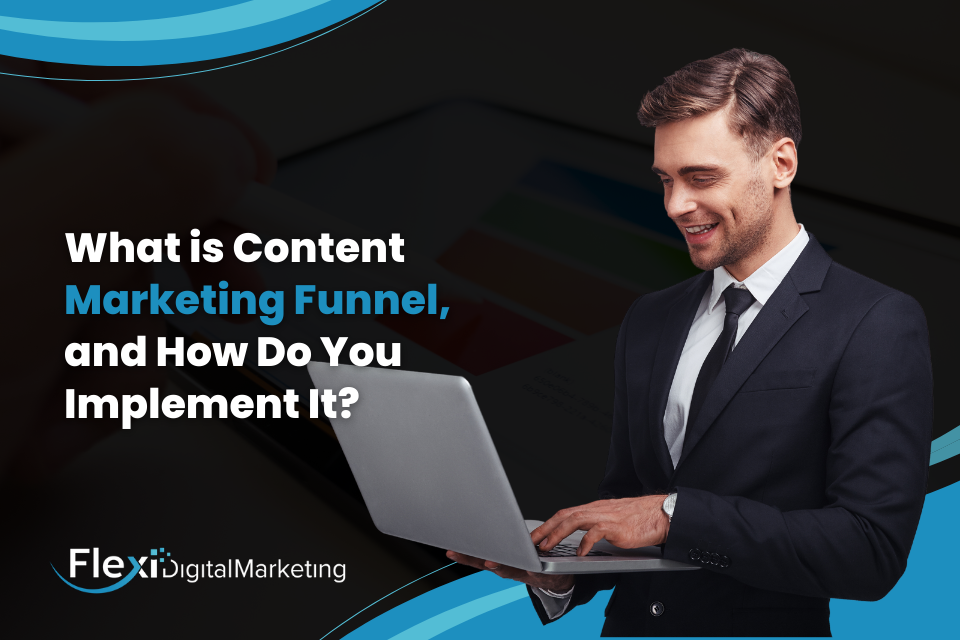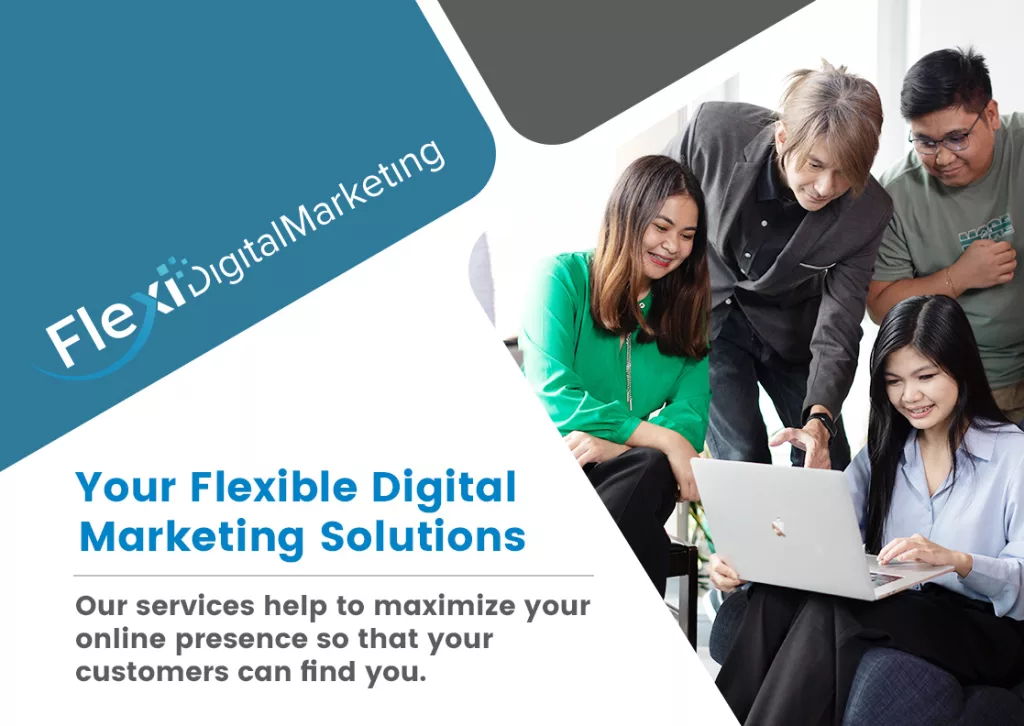A content marketing funnel is a vital tool for your business. Not only does it help drive sales, but it can also help grow your business in other aspects like building brand loyalty and growing your customer base.
In this article, we are sharing everything you need to know about the digital content marketing funnel. So you can create compelling content strategies for each stage of a buyer’s journey and see the results you are looking for.
What is a content marketing funnel?
Basically, the content marketing funnel definition is that it is a multi-step model that helps brands use content to attract potential customers. It involves creating and sharing helpful content with current and potential customers.
The aim is to market but not by hard selling. In fact, a content marketing funnel intends to provide value to the audience, become an authority and thought leader in your industry, and raise brand awareness.
What is the role of a content marketing funnel?
If you look at it from a big-picture perspective, you can see how an effective content marketing funnel can aid in journeying your audience into paying customers. With that said, it has other roles aside from aiding in sales.
To Inform
The point of the content you create and post is to address your audience's problems, be it common or niche, and present a doable solution. The solution can be your company directly or present your brand as a convenient and trustworthy avenue to solve their problem.
To Connect
Content can be used as a bridge to connect and build a meaningful relationship with your audience and customers. This can be done through your business website and social media platforms where you can directly engage with them.
To Entertain
Nobody wants boring and bland. Funny, intriguing, compelling, or even relatable content is an easier way to soft-sell your brand, products, or services.
Pros And Cons of Content Marketing Funnel
Whether it is B2C or B2B content marketing funnel, it is sort of a game-changer when it is done right. In fact, it provides many advantages that your business will surely benefit from.
Pros
Build Brand Awareness
The content created at the top of the funnel helps build awareness of your brand. The more it grows, the more people visit your website and follow you on your social media channels. This allows you to become a trusted thought leader in your industry—which will further help your brand’s image.
Generate & Nurture Leads
The more your audience engages with your content, the more they come to trust you. As a result, they are more likely to share their personal information, like their contact details, which will help in capturing more leads.
This will help you build a better relationship with your engaged audience. In addition, this will also allow you to share the value you can provide them with your products and services.
Generate Sales
An effective content marketing sales funnel can help generate sales. This came from both new customers that were recently converted or loyal customers that are repurchasing your products or upgrading their subscriptions.
Increase Customer Loyalty
The content you create can continue your relationship with your customer. In fact, it can further improve it by providing value. This will make them loyal customers. Later, this can lead them to make repeat purchases or even refer the people they know.
Cons
On the flip side, a digital content marketing funnel also comes with some disadvantages that you should be aware of.
Time-Consuming
Producing high-quality content is time-consuming, especially for a content marketing funnel. Aside from content creation, this also involves tracking content performance and analysing the data to improve further and optimise the funnel.
Requires Upfront Investment
High-quality content needs an upfront investment of both time and money. You need the right tools, resources, and team to develop an effective content strategy that resonates with your target audience.
Complex Process
Marketing funnel content mapping may look easy because it moves in one direction, which is from top to bottom. The reality is it can be complex since there are multiple touchpoints, content types, and channels.
May Not Always Lead To Immediate Sales
Content marketing is a long-term strategy which requires patience and persistence on your end. That means you might not generate sales immediately.
May Not Work For All Businesses
A content marketing funnel might not be the most effective approach depending on your industry, audience, and even business goals.
4 Content Marketing Funnel Stages
There are different types of content marketing funnel templates and even frameworks for you to choose from. Even so, four stages are present in all of them.
Awareness
As the name of this stage suggests, this is the part where people learn about your brand. At this stage, they learn the problem or challenge they face can be solved with the help of your brand.
Evaluation
This is the stage where people are no longer just aware of your brand, they are an interested audience. At this point, this is where you build a brand affinity and further progress your relationship with a potential customer.
Conversion
Your potential customer is now a paying customer at this stage. While they are ready to commit, it is still important to reassure them and even help them decide what to purchase.
Retention
Even after your customer makes a purchase, you should continue giving value. This means helping them maximise the solution you have provided and engaging with them through the content you produce.
Stages of a Buyer’s Journey
With that said, there are three phases of a buyer’s journey. Each one has its own goals, metrics, and content strategies.

Top of the Funnel (TOFU)
The goal of the TOFU is to raise awareness. The point is to pique people’s interest in your brand and products or services, establish a relationship with your audience, and build their trust.
In addition, this is the stage where you can demonstrate your brand’s expertise and even build your authority as a thought leader.
Tips
- Research and target the right keywords. Search engine optimization (SEO) and pay-per-click (PPC) can help raise awareness for your brand. In addition, make sure that your website’s on-page SEO is also optimised.
- Minimise self-promotion. The primary goal of the TOFU is to raise awareness, educate, and build customer trust. Pushing or hard selling your products or services at this phase may come off as insincere and may have the opposite effect than what you intend.
- Ramp up content production. Particularly blogs. This is the phase where you establish your brand as a thought leader. So, you need plenty of content that will both help and prove that you are knowledgeable in your industry and capable of providing the right solutions.
Content Strategy
- SEO-Optimised Blogs
- Videos
- Youtube Channel
- How-To Content
- Webinar Snippets
- Social Media Ads
- Targeted Website Ads
- Direct Email
- Cold Email Outreach
Metrics
-
- Sessions. The number of sessions or visits represents the number of times people have come to your website. Marketers usually refer to this as "web traffic" or just "traffic.” The aim is to have a high number of sessions on your site.
- % New Sessions. This metric tells you how many people visit your website for the first time. Ideally, you want this number to be high, which means you are attracting new visitors regularly.
However, if it is too high, it could mean that you need to work on getting people to come back to your site more often.
- Bounce Rate. This shows you the percentage of sessions where visitors didn't take any action on your site. You can understand how interesting and relevant your content is to your visitors.
Ideally, you would want to keep your bounce rate low. This indicates that your visitors find your content engaging enough to stay on your site.
- Traffic Per Channel. This metric lets you see how much traffic each marketing channel brings in. This will help you make decisions based on each channel's performance.
Middle of the Funnel (MOFU)
MOFU is the phase where you can speak more directly to your target audience. Most people that have seen or engaged with your top-of-funnel content do not end up making a purchase.
At this stage, focus on the people who are more likely to buy. This is where you can self-promote your brand more and start talking about the benefits of your product and compare it to other brands out there.
Tips
- Ramp up self-promotion. This is the phase where you can be more direct with your audience about what your brand can do for them and your products or services.
- Repurpose TOFU content. Use your existing content to attract more people to your brand.
- Add a little friction. Sometimes it is good to make things a little more challenging. This is because people who are truly interested and committed will take the time to do it.
- More blogs. Blogs are not only for the TOFU phase. In fact, you can produce more blogs that are about your brand, products, or services. The point is to help engaged and interested audiences to arrive at the decision that your brand is the one they should choose.
Content Strategy
- Case Studies
- Social Media
- Templates
- Drip Campaigns
- Newsletters
- Webinars/Events
- White Papers
Metrics
- Visitor-To-Lead Conversion Rate. This measures how many people who visit your website end up giving you their information or becoming a “lead.” This is a great way to see how well your website is doing in terms of attracting potential customers.
- Number Of Leads. This refers to the number of new people who have given you their email addresses or contact details. It is an indication that they are interested in products or services.
- Email Open And Click Rates. "Open rate" refers to the percentage of people who actually opened the email you sent them. On the other hand, "click rate" is the percentage of people who clicked on the call-to-action (CTA) button that links them to your intended action.
Bottom of the Funnel (BOFU)
At the BOFU stage, your audience has made the decision to purchase the solution you provide and become paying customers. This is the point where they really want your specific solution.
You could provide a bit more guidance to help your leads feel completely confident in their choice. The point is to help them overcome any objections or hesitations they may have. This minimises any potential resistance and makes it easier to convert them into a customer.
Tips
- Hyper-targeting. As the name implies, this means focusing on a very specific group of people you want to sell to. That means you should be thinking about this specific group of interested people. Identify their pain points and interests, and create personalised content based on your buyer personas.
- Always test the important pages. Basically, you should continuously try out different ways of presenting information such as the CTA buttons and the layout of certain pages on your website. In addition, make sure the pages are user-friendly and make them more effective for your potential customers.
Content Strategy
- Customer Stories
- Spec Sheets
- Trials
- Demos
- Sales Decks
Metrics
- Total Revenue. This measures the total amount of money generated by sales of a particular product or service over a specific period of time. This metric enables you to effectively determine how successful the conversion of leads into paying customers is.
- Number of New Customers. This is a metric that measures the effectiveness of your business's BOFU strategies in terms of how many new customers you acquired during a given time period.
- Revenue Per Customer. This calculates the average amount of money a business earns from each customer over a specific period of time.
- Customer Lifetime Value (CLV). This estimates the total amount of revenue that a customer is expected to generate for your business during their entire lifetime.
- Conversion Rate. This measures the percentage of users who complete a desired action, like making a purchase, out of the total number of people who visited your website or a specific page.
Conclusion
An effective content marketing funnel can help you in a lot of ways. It can help with brand awareness, build a relationship with your audience, generate sales, and, ultimately, enable your business to grow further.
With that said, it is important to test every aspect of your funnel. Use the data gathered from the metrics of each phase to further improve your content. And, make sure to keep up with the latest content marketing trends.
Ready to upgrade your content marketing funnel? Check out our content services to know more.


